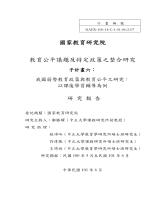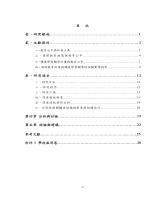| 英文摘要 | Since the year of 1960, the educational policies started to focus on the issues of disadvantaged students and their schooling. How to disenthrall the struggles that disadvantaged students face during their daily school lives become the priority that educators and administrators need to consider especially the issues related to the afterschool programs. Like the Title I of ESEA in the United States and Educational Priority Area (EPA) in the United Kingdom, there are series of educational policies related to disadvantaged students and afterschool programs in Taiwan since 1995. In order to review the con and pro of the existed afterschool program policies, the principal investigator collects the theories related to disadvantaged students and schooling including Rawls, Coleman, Sen, and Young to figure the possible solution of afterschool programs and conducts a survey on the questionnaires on disadvantaged students and afterschool programs. Furthermore, the researcher host three focus group discussions to provide useful reflections from the quantitative findings. As the results, the author provides conclusions and suggestions to the further discussions, research, and policy making. |


